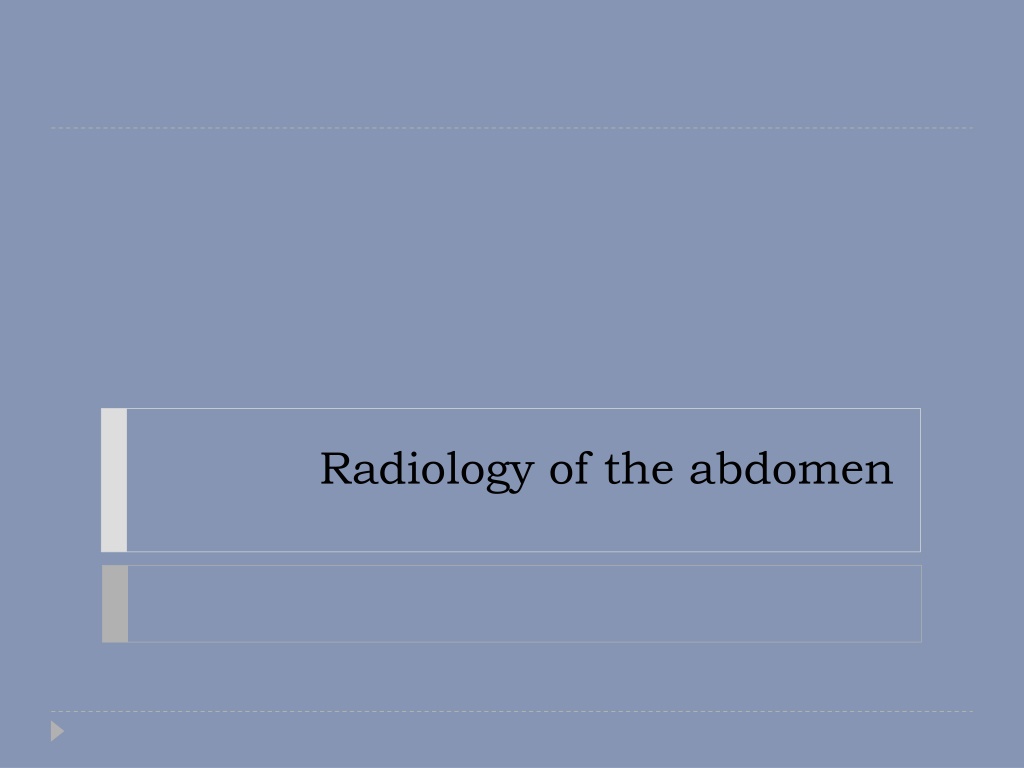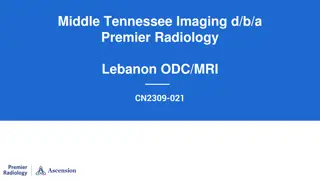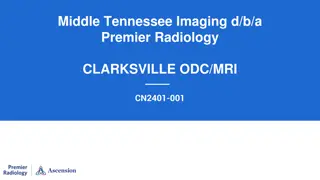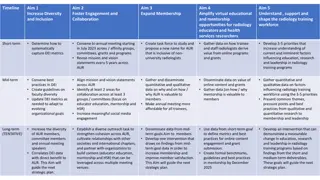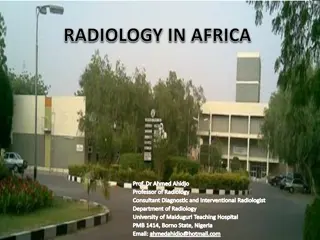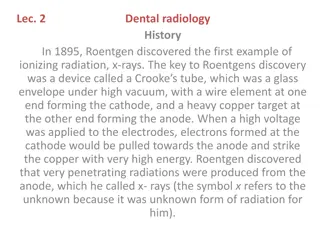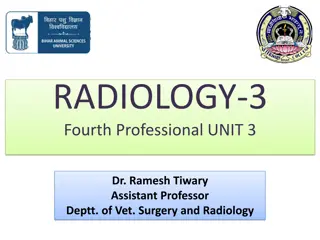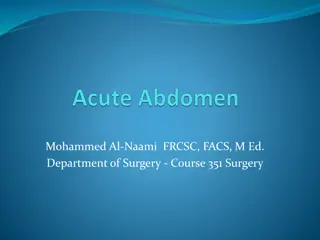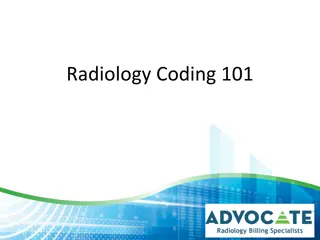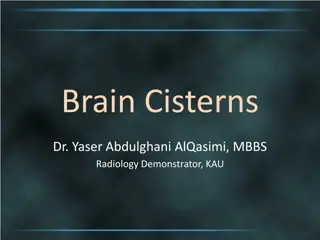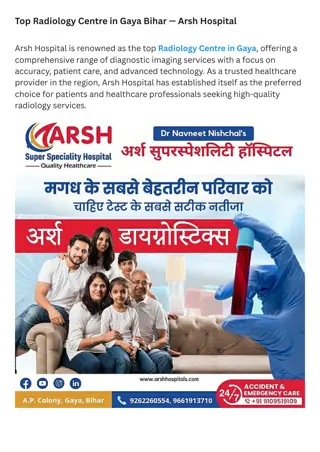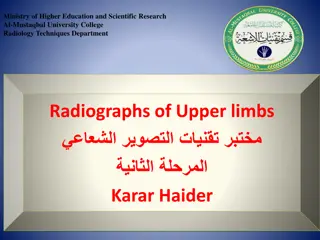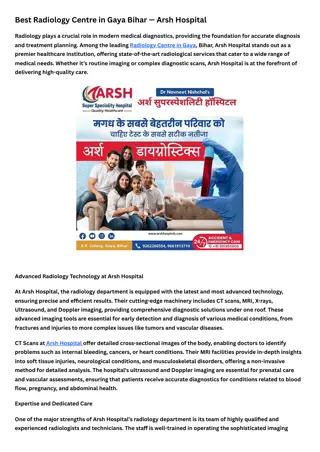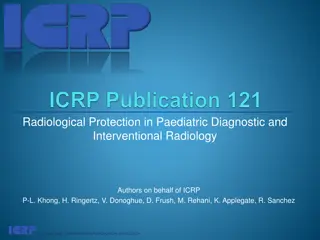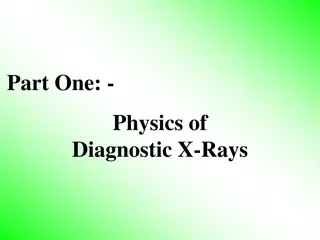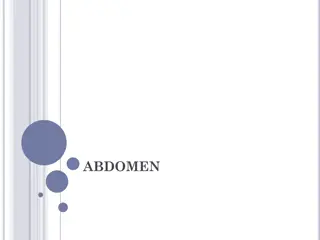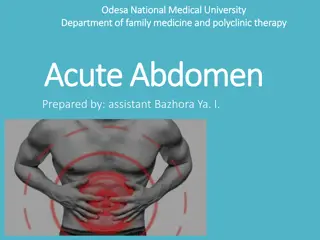Radiology of the abdomen
Abdominal radiology plays a crucial role in diagnosis using modalities such as X-ray, fluoroscopy, ultrasound, CT scan, and MRI. This technology helps assess conditions like bowel obstructions, calcifications, and more. Interpreting the gas patterns, diameters, and signs seen in abdominal imaging is essential for identifying normal and abnormal findings.
Download Presentation

Please find below an Image/Link to download the presentation.
The content on the website is provided AS IS for your information and personal use only. It may not be sold, licensed, or shared on other websites without obtaining consent from the author. Download presentation by click this link. If you encounter any issues during the download, it is possible that the publisher has removed the file from their server.
E N D
Presentation Transcript
Radiological modalities X Ray Flouroscopy U/S CT scan MRI 1. 2. 3. 4. 5.
X - Ray It is ionizing radiation radiation hazard. It is useful in assessing the bones, bowel gases (obstruction) and calcification.
Normal AXR Gas in stomach Liver Splenic flexure T12 11thrib Psoas margin Left kidney Hepatic flexure Transverse colon Iliac crest Gas in sigmoid Sacrum Gas in caecum SI joint Bladder Femoral head
Gas pattern What is normal? Stomach Almost always air in stomach Small bowel Usually small amount of air in 2 or 3 loops Large bowel Almost always air in rectum and sigmoid Varying amount of gas in rest of large bowel
3, 6, 9 RULE Maximum Normal Diameter of bowel Small bowel 3cm Large bowel 6cm Caecum 9cm
Mechanical SBO Dilated small bowel Fighting loops (visible loops, lying transversely, with air- fluid levels at different levels) Little gas in colon, especially rectum
SBO Supine SBO Erect Air fluid levels
Step ladder appearance Loops arrange themselves from left upper to right lower quadrant in distal SBO
Double Bubble Sign Duodenal Atresia
Mechanical LBO Colon dilates from point of obstruction backwards Little/no air fluid levels (colon reabsorbs water) Little or no air in rectum/sigmoid
Causes of Mechanical LBO TUMOUR VOLVULUS HERNIA DIVERTICULITIS INTUSSUSCEPTION
Coffee Bean Sign Sigmoid volvulus Massively dilated sigmoid loop
Thumbprinting The distance between loops of bowel is increased due to thickening of the bowel wall. The haustral folds are very thick, leading to a sign known as 'thumbprinting.'
Extraluminal air TYPES Pneumoperitoneum/free air/intraperitoneal air Retroperintoneal air Air in the bowel wall (pneumatosis intestinalis) Air in the biliary system (pneumobilia)
Upright film best The patient should be positioned sitting upright for 10-20 minutes prior to acquiring the erect chest X- ray image. This allows any free intra-abdominal gas to rise up, forming a crescent beneath the diaphragm. It is said that as little as 1ml of gas can be detected in this way.
Free Air Causes Rupture of a hollow viscus Perforated peptic ulcer Trauma Perforated diverticulitis (usually seals off) Perforated carcinoma Post-op 5-7 days normal, should get less with successive studies *NOT ruptured appendix (seals off)
Signs of free air Crescent sign Riglers sign Football sign Falciform ligament sign
Crescent Sign II Free air under the diaphragm Best demonstrated on upright chest x rays or left lat decub Easier to see under right diaphragm ? Why?
Riglers Sign Bowel wall visualised on both sides due to intra and extraluminal air Usually large amounts of free air May be confused with overlapping loops of bowel, confirm with upright view
Football Sign Seen with massive pneumoperitoneum Most often in children with necrotising enterocolitis In supine position air collects anterior to abdominal viscera Paediatric Adult
Falciform ligament sign Normally invisible. Supine film, free air rises over anterior surface of liver
Soft tissue masses Organomegaly Know normal landmarks CT, US and MRI have essentially replaced conventional radiography in the assessment of organomegaly and soft tissue masses
Abdominal Calcifications Location Pattern
Calcified fibroids Calcified enteric lymph nodes Calcified pancreas Floccular
Bladder calculi Lamellar
Renal calculi Pelvicalyceal calcifications
Staghorn Calcification Renal stones are often small, but if large can fill the renal pelvis or a calyx, taking on its shape which is likened to a staghorn. Tubular
Renal calculi Parenchymal calcification Nephrocalcinosis Uncommonly the renal parenchyma can become calcified. This is known as nephrocalcinosis, a condition found in disease entities such as medullary sponge kidney or hyperparathyroidism. Flocculent
Floruscopy We are using a contrast material for better visualization of hollow organs, such as bowel loops and KUB. It is useful to assess the mucosal pathology. We can use either oral or rectal contrast If we use rectal contrast; we can use either: Single contrast barium enema. Double contrast barium enema.
What type of this study? 4 5 6 Single or double? 3 7 2 8 1
4 5 6 1. Rectum 2. Sigmoid colon 3. Descending colon 4. Splenic flexure 5. Transverse colon 6. Hepatic flexure 7. Ascending colon 8. cecum 3 7 2 8 1
Abnormal study Colon Cancer (apple core sign)
Lead pipe colon Shortening of colon secondary to fibrosis Loss of haustration Ulcerative colitis
Abnormal Normal
CT Scan It is an ionizing radiation. Corss-sectional imaging. Better anatomical visualization.
5 2 1 6 4 3
5 2 1 6 4 3 1- Rectum 2-Sigmoid colon 3-Descending colon 6-Cecum 4-Ascending colon 5-Transverse colon
3 2 4 1 5 6
3 2 4 1 5 6 Descending colon Splenic flexure Hepatic flexure Ascending colon .1 .2 .3 .4 .5 .6 cecum Sigmoid colon
